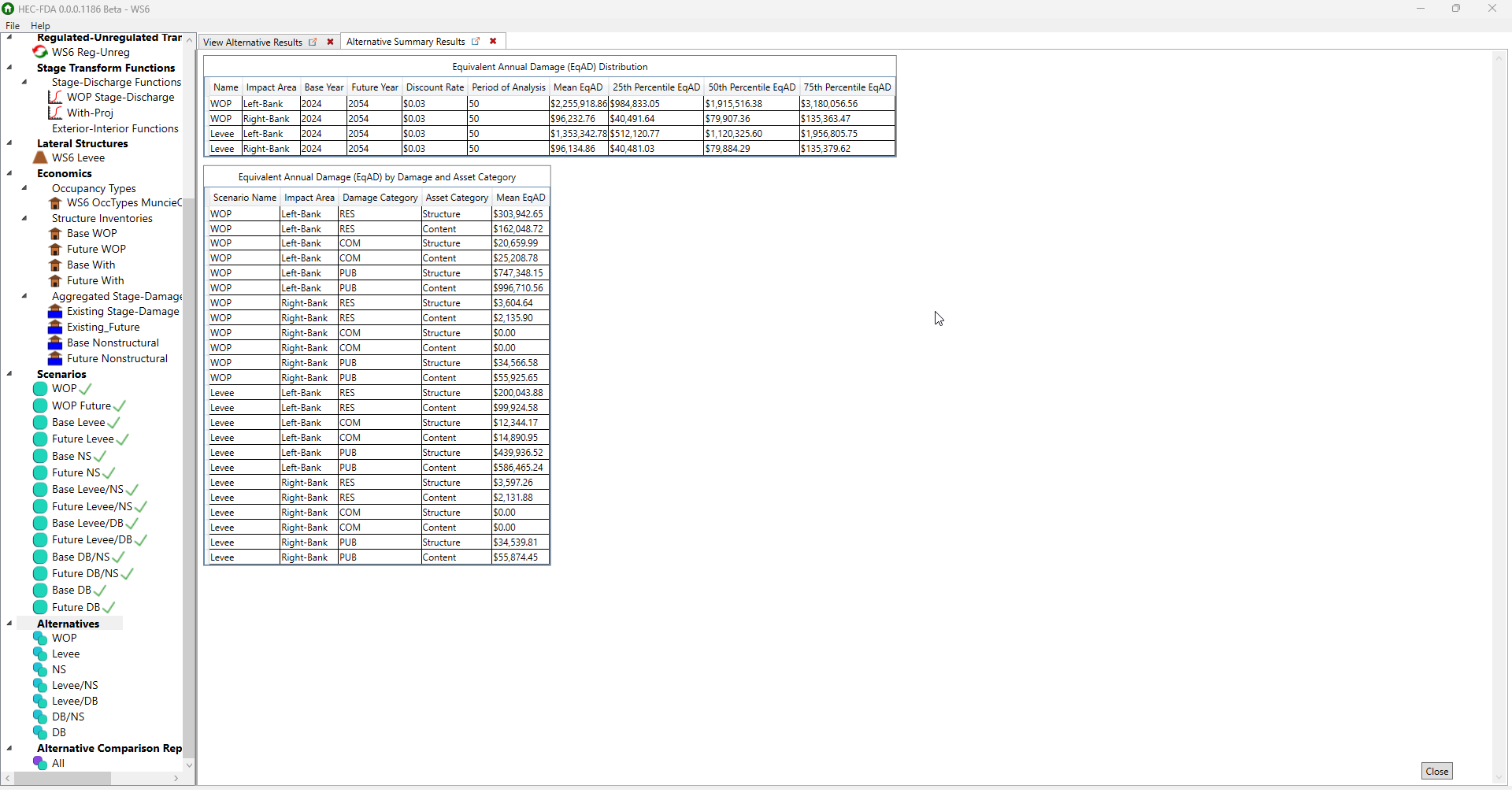Alternative Results
The results available for a given alternative can be viewed by the type of damage measure: expected annual damage or equivalent annual damage (EqAD). The expected annual damage reports summarize information available from the scenario damage reports. Equivalent annual damage (EqAD) is the main result of an alternative. All compute algorithms in HEC-FDA Version 2.0 are the same as those found in HEC-FDA Version 1.4.3, except those identified in the HEC-FDA Version 2.0 Release Notes.
Equivalent Annual Damage (EqAD)
Equivalent annual damage (EqAD) reflects the amortization of damage over the period of analysis for the purpose of comparison with average annual equivalent cost on an apples-to-apples basis. Three reports are available on equivalent annual damage (EqAD): damage with uncertainty, damage by impact area, and damage by damage category.
Damage with Uncertainty
HEC-FDA processes the distributions of expected annual damage for each scenario connected to an alternative to calculate the distribution of equivalent annual damage (EqAD). An image of the report on EqAD with uncertainty is included below. On the top left-hand side, the mean of the distribution is displayed. Under the mean, the first, second, and third quartiles of EqAD are reported. The distribution of EqAD realizations is displayed on the right-hand side of the report. The discount rate and period of analysis by which the amortization was carried out are displayed underneath the histogram.

Damage by Impact Area
The damage by impact area report displays the mean equivalent annual damage (EqAD) for each impact area summed across all damage categories. In the example below, there are two impact areas. The discount rate and period of analysis are displayed under the table.

Damage by Damage Category
The damage by damage category report displays the mean equivalent annual damage (EqAD) for each damage category summed across all impact areas. In the example below, there are three damage categories. The discount rate and period of analysis are displayed under the table.

Summary Results
Summary results displays equivalent annual damage (EqAD) with uncertainty and EqAD by damage and asset category for all selected alternatives. The top table in the image below contains the EqAD with uncertainty results for each alternative - impact area combination. Each analysis year included in the alternative and the discounting parameters used in amortization are displayed. For example, the 25th percentile of EqAD in the left bank impact area in the without-project condition is $984,833.05. It can also be said that there is a 75% chance that EqAD in the left bank impact area is greater than $984,833.05 in the without-project condition. The bottom table below contains data on mean EqAD for each alternative - impact area - damage category - asset category combination. For example. mean residential structure EqAD in the left bank in the Levee alternative is $200,043.88.
